Why Native Plants Are Important
- Why Native Plants Are Important - August 6, 2021
In this article, I’ll explain why native plants are important and how to make your yard more beneficial to wildlife.
First I saw the birds. Then I saw the bees. Then I saw the plants. I was hooked.
I’ve been a naturalist all my adult life and I’ve learned that if you want to attract the birds and the bees, you need the right plants.

Now, many decades later, I help people discover the joys of gardening with native plants and the pleasure of watching wildlife that they attract.
Planting A Garden With Native Plants
Native gardening benefits both humans and other animals. Plants and animals evolved together, so they “know” each other. They’ll always choose the “right” dance partner.
Native plants provide food, shelter and places for animals to raise families.
And, for the beginning gardener the good news is, native plants require much less care than non-native plants.
Benefits Of Native Plants
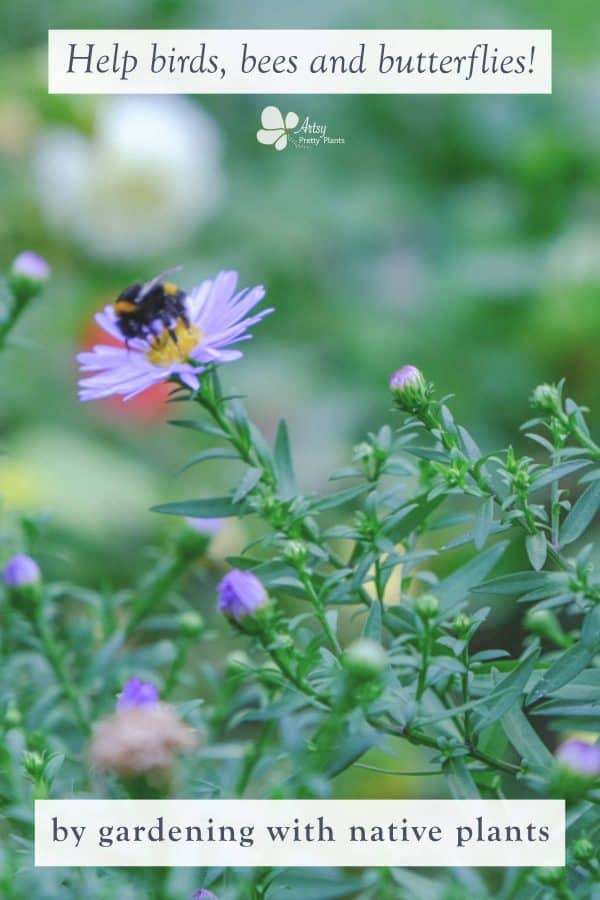
Native species and plantings give us a sense of place and belonging, because they are from here. They are as familiar as the people you grew up with.
Why do native plants require less care than non-native plants?
Because natives evolved locally in their natural habitats, they know how to thrive in local weather conditions.
This means that they are more drought-tolerant than non-native plants and often aren’t very particular about the soil conditions that they grow in.
Imagine enjoying more free time because you don’t have to mow the lawn as often and also saving money by not purchasing fertilizers and weed killers.

Natural landscapes support local wildlife. Beneficial insects are often unable to lay eggs on non-native plants.
Mother butterflies and moths are choosy about where they lay their eggs. This is because their babies are very picky eaters. Maybe you’ve met some children like that?
Natural landscaping is a way for gardeners to support the next generation. If you love birds and would like to see more species in your yard, choose native trees and plants.
Here’s a list of fall trees that may be native in your area, that have especially vibrant colors.
Fun facts:
- 96% of bird species feed their babies insects.
- To successfully feed their babies, one pair of chickadees must bring home between 390-570 insects per day for 16 days.
- Chickadees often produce two to three clutches of eggs in one season.
- This means that the hard-working chickadee parents must provide more than 27,000 insects for their young to survive.
Your garden does not have to be all native plant species. Up to 30% of your landscape can be non-natives.
There are many non-native plants that have sentimental value, such as Gardenias. I can’t imagine a summer without Gardenia perfume wafting through the hot, still air.
Other great ways of watching wildlife in your own yard is by buying or making a butterfly puddler. It is a drinking station for butterflies that provides them with nutrients.
Also, you can make this DIY squirrel proof bird feeder, to have as a supplementary food source for birds.
If making one isn’t your thing, I also have an article with a list of the best squirrel proof feeders, along with what to consider and what the drawbacks might be for each.
Why Non-Native Species Are A Problem
When our ancestors arrived in North America, the plants that greeted them were not like the plants from their homelands.
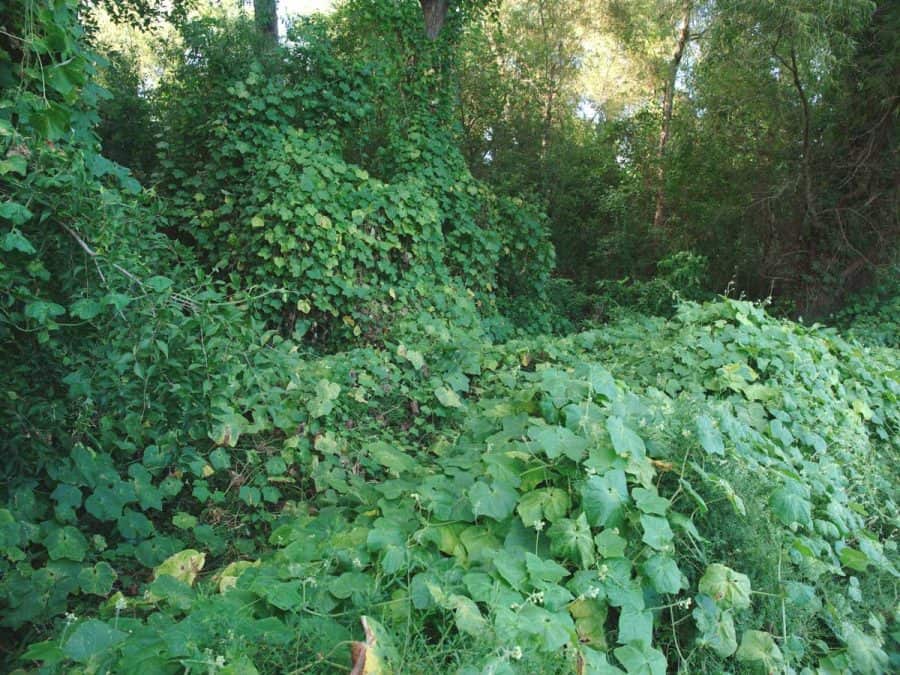
As a result, people brought their favorite plants with them to make them feel more at home.
In the United States, this trend continues today, with most plant designers using plants from Asia or South America for home and business landscaping.
Why is this a problem? Because many non-natives are invasive plants, this means that they take over an area and prevent native plants from growing there.
They are harmful to native plants and wildlife, which are often unable to use them for food.
Many scientific studies show that the number of insect species and populations are dwindling, and the introduction of non-native species is known to contribute to this problem.
But I have a lot of grass!?
Wouldn’t it be great to not have to spend hours mowing and fertilizing your yard? Grass is currently the largest habitat in the United States. It uses a large amount of water that could be saved.
By carving out some of your lawn to put in native plants, you will cut down on time, expenses and money spent on fertilizers and pesticides.
Transitioning to Native Gardening
Planting native plants isn’t an all-or-nothing endeavor. Even the smallest native garden is useful and can make a huge difference.
Instead of thinking of our gardens as just something that is pretty, maybe we could start to think of them as a way to make this world a better place by supporting more life, storing carbon, feeding pollinators and managing water.
Which native plants provide the most benefits?
Landscape design that mimics the natural environment is important when transitioning to native landscapes.
Planting native trees is one of the most powerful changes you can make in your landscape because they offer many benefits.
Trees
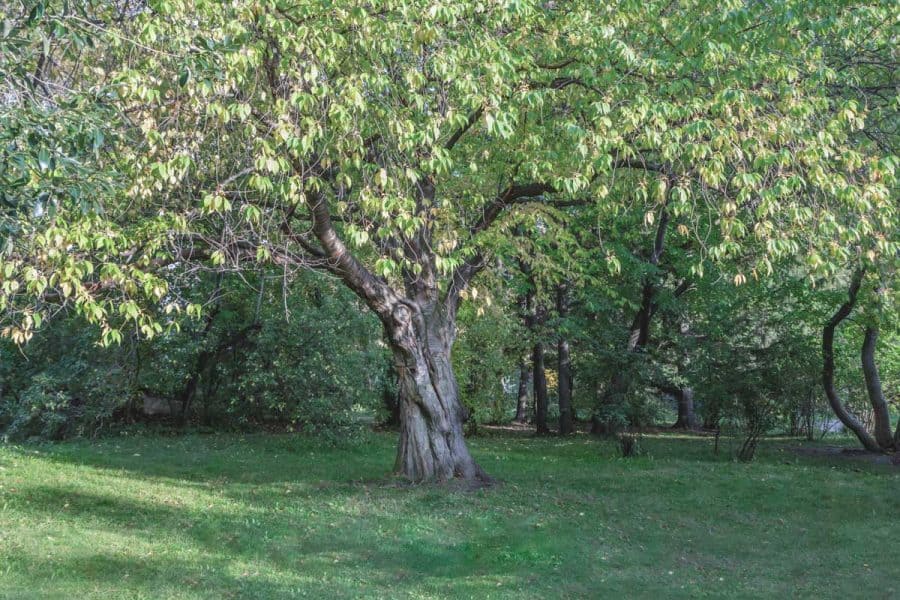
Native trees offer shade, which can reduce cooling costs in our warming climate. They also host numerous animal species.
Native trees are also a great way to combat climate change because they can store so much carbon underground.
Fun facts:
- One native oak tree hosts over 534 species of butterflies and moths.
- One non-native Bradford Pear tree hosts one species of insects.
- One non-native Crepe Myrtle tree hosts zero species of insects.
Flowers
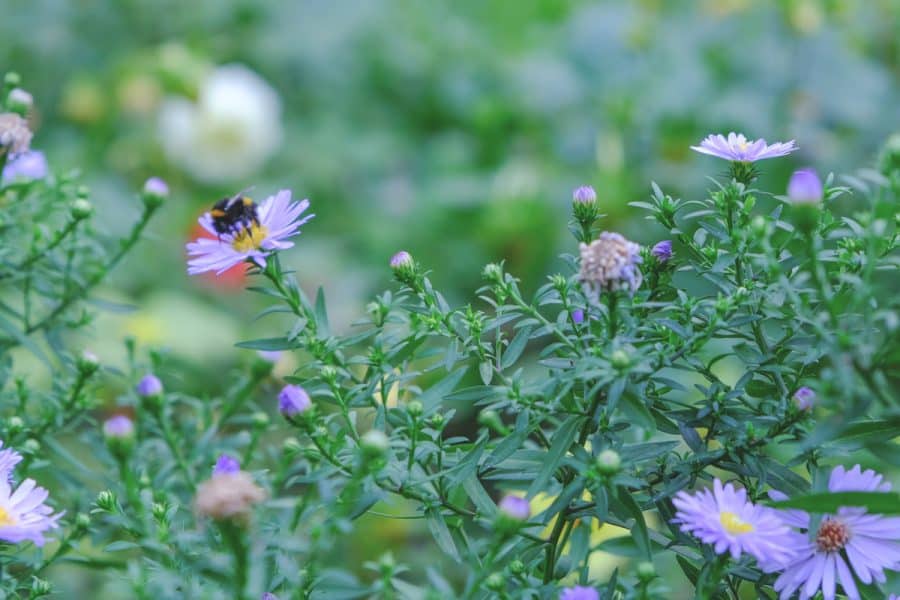
If you are interested in flowers to attract butterflies, insects, birds and other wildlife, even a small 6’x6’ bed would be a great start with the right native plant choices.
There are many amazing native flowers that will come back year after year to provide nectar and pollen for pollinators.
Be sure to include a native species of milkweed in your garden.
Milkweeds are the only plants that the monarch butterfly can lay her eggs on.
Ground Covers
A good native ground cover helps prevent water evaporation from your plants and provides shelter and moist soil for many animals that are eaten by local birds.

This means you can use less water for your plants. Setting aside a corner of your lawn for leaf litter will provide habitat for earthworms and other decomposers that birds love to eat.
In addition, leaving your leaves provides habitat for fireflies, which are a source of entertainment for the whole family.
If you have poor soil in your yard, try “leaving your leaves”. This will help you develop a layer of organic matter for your plants, which means that during a dry season, you won’t need to water very often.
Moss is an amazing option for a groundcover. It reduces CO2 and pollutants in the air and is a habitat for insects that native birds eat. Here’s an article on how to transplant and expand moss within your yard.
Know Your Native Plants
It is important to know the native plants in your area. So I recommend finding your local native plant society or using a reputable online resource such as Audubon Native Plants, and the Lady Bird Wildflower Center.
Both of these organizations offer easy search tools to help you find the right plant for your soil types, moisture levels and the amount of sunlight in your home garden.
How To Start a New Garden For Native Plants
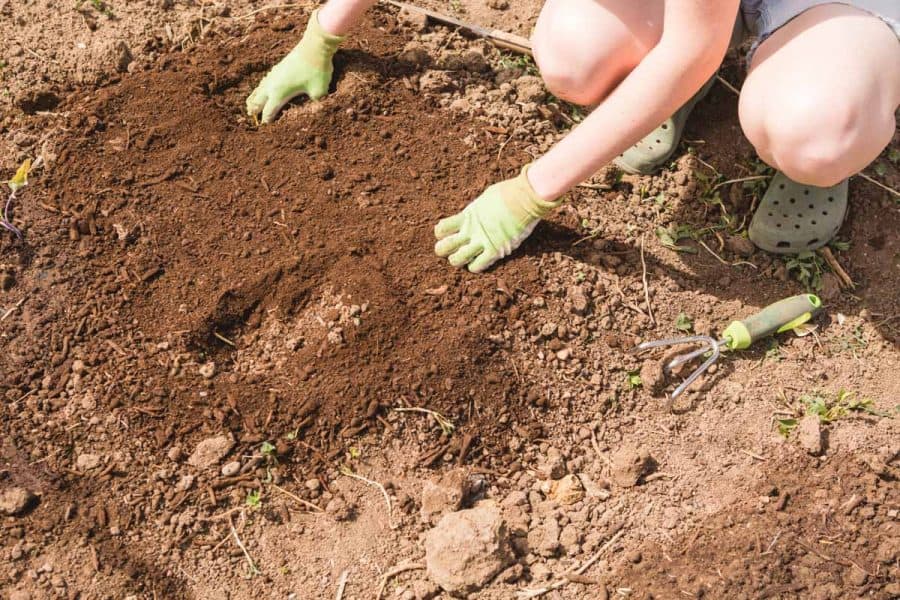
- Native plants are usually not very particular about their soil types. Some have special requirements.
However, if you are dealing with hard packed clay (often the result of development) you might need to amend the soil.
One of the best ways to do this is to double dig new planting areas and amend with compost or other soil conditioner. - See if your county offers free compost. If they don’t, consider buying a bag or two of SuperSod. It looks like it’s expensive but it is worth every penny when amending soil.
- Define the parameters of the new areas. There are several ways to do this. You can use a hose to outline the bed or try chalk spray.
This is a temporary chalk spray paint that you can use to demarcate the new beds. It will disappear. Or, you can use stakes and string.
- You kill any existing grass in your planting areas. Can use sheet mulching or chemical means. You can read more about sheet mulching with cardboard here.
- Order and install plants. Fall is the best time to do this so depending on where you are located this would be sometime between September through October.
- Remember that many of your natives will go dormant in the fall, so you will want to have the beds nicely mulched.
Depending on what type of mulch is usually used in your neighborhood you could go with pine mulch or chips.
An alternative to wood mulch or pine straw are leaves that have been through the lawn mower. These will degrade and make new soil, and eliminate the need to add compost.
- If you install in the fall, then either the next year–during the fall or during the following spring, you will want to top–dress the beds with 1-3” of compost before you put fresh mulch on them.
I usually recommend doing this about every 2-3 years to replenish the soil. Eventually, a living mulch or groundcover will eliminate this step.
You can also read more here about fall perennial care.
Fall and winter care for native designs are a little different than what most people are used to.
Usually, people either pull out their dormant plants and then replant with new winter interest, or they cut it all down.
This is anathema when landscaping for wildlife as the whole point is for these plants to provide habitat, food and overwintering resources for the wildlife.
Putting out signs certifying your yard is critical in this education. To start, I recommend the following places to start with.
Displaying these signs in a tasteful way next to the street will help explain to neighbors what you are trying to accomplish with your property.
Here is more information on certifying your yard.
Monarch Waystation Program
Georgia Audubon
Great Starter Plants For Native Gardens
Plants that provide a benefit to the environment will depend on your region. Here in Georgia, and other parts of the Southeast, these are great native plants to choose from.
Remember to check to see if these plants are native to your location.
Butterfly Host Plants
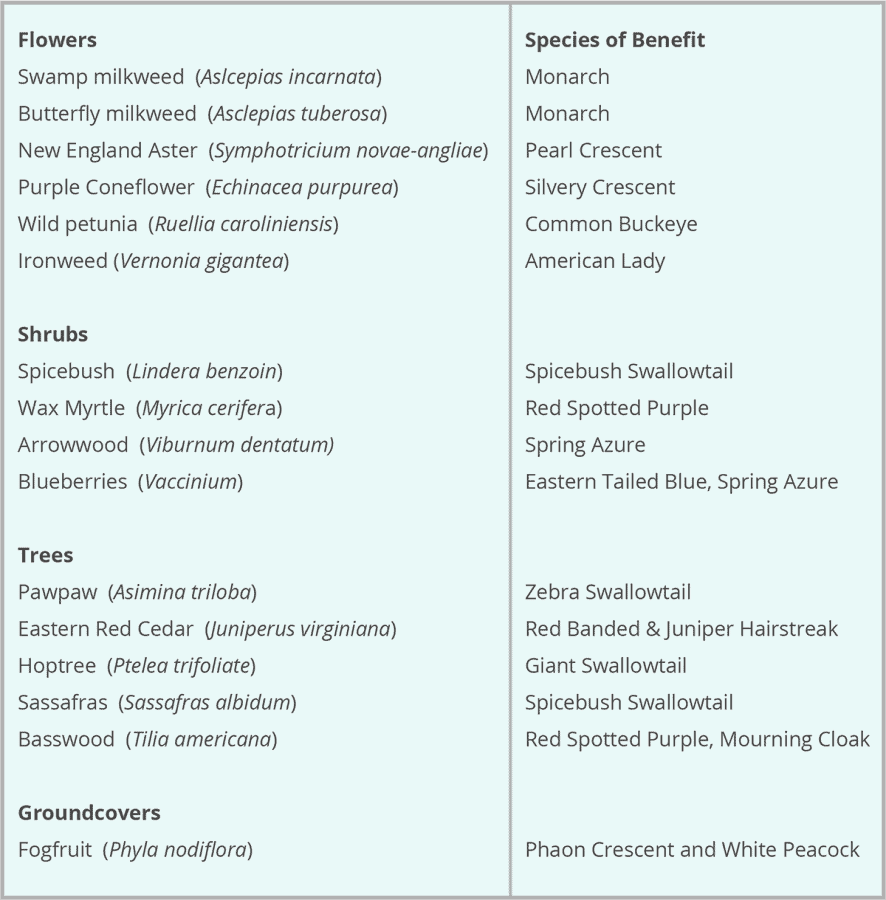
Native Plants Beneficial for Birds
List provided by Ellen Honeycutt
These plants will provide nectar for your nectivores, such as hummingbirds.
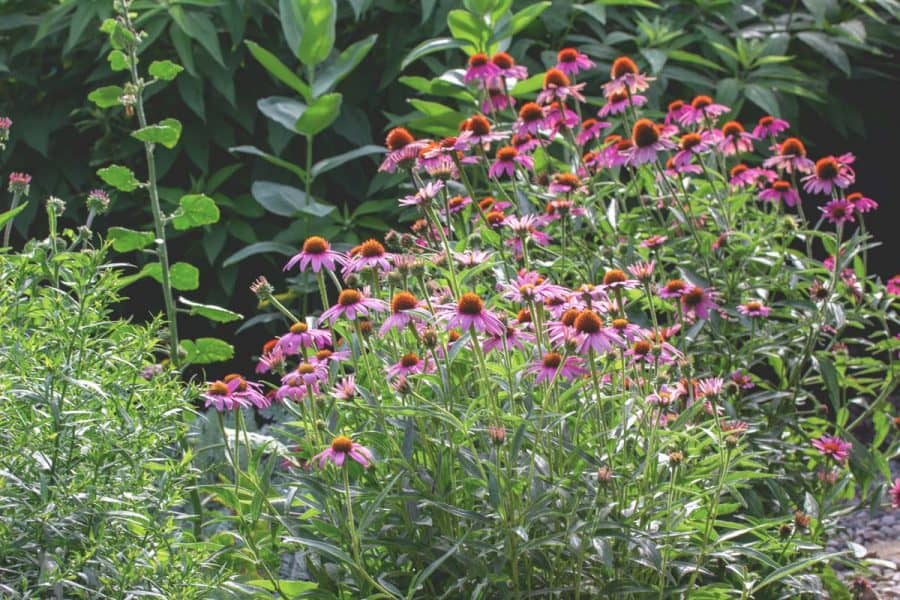
Vines
- Coral Honeysuckle (Lonicera sempervirens)
- Crossvine (Bignonia capreolata)
Shrubs
- Red Buckeye (Aesculus pavia)
- Rhododendron (Rhododendron prunifolium)
Perennials
- Cardinal Flower (Lobelia cardinalis)
- Sages (Salvia)
- Red columbine (Aquilegia Canadensis)
These plants will benefit frugivores, which are fruit-eating species.
Vines
- Virginia Creeper (Parthenocissus quinquefolia)
- Grapes (Vitis)
Shrubs
- Chokeberry (Aronia)
- Beautyberry (Callicarpa americana)
- Blueberry species (Vaccinium)
- Hearts a’bustin (Euonymus americanus)
- Elderberry (Sambucus canadensis)
Perennials
- Blackberry (Rubus)
- Partridgeberry (also a groundcover) (Mitchella repens)
Trees
- Black cherry species (Prunus serotina)
- Plum (Prunus americana)
- Dogwood (Cornus)
- Serviceberry species (Amelanchier)
- Hackberry species (Celtis)
- Hawthorn species (Crataegus)
- Black Gum (Nyssa sylvatica)
Granivores, which are seed-eating animals, will benefit from these plants.
Perennials
- Sunflowers (Helianthus)
- St. John’s wort (Hypericum)
- Black-eyed Susan (Rudbeckia)
- Coneflower (Echinacea and Ratibida/C)
- Aster (Symphyotrichum)
Grasses
- Switchgrass (Panicum)
- Indian grass (Sorghastrum nutans)
- Bluestem (Andropogon and Schizachyrium scoparium)
Trees
- Maple species (Acer)
- Pine species (Pinus)
- Tulip poplar (Liriondendron)
- Sweetgum (Liquidambar)
Insectivores will eat insects, which includes 96% of baby birds.
- These are plants such as perennials, shrubs and trees that serve as host plants for butterflies, moths and sawflies
- Leaf litter on ground
- Standing dead trees (shorten for safety if needed) which attract bugs and beetles in dead leaves and under bark.
Omnivores are species that will eat each of the above, plus nut-bearing trees especially oaks (Quercus).
Native plant landscaping designers in your area are great resources for native gardening. If you live in the Atlanta area, I would love to help you transition your property to include native plants. You can find more information for me on my website, Green Gardens Design.
Some of the links on this page have been provided as a convenience for finding materials. These links may also be affiliate links. As an Amazon Associate I earn from qualifying purchases, at no extra cost to you.
I only recommend products I’ve used and loved, unless otherwise stated. Click here to read my full disclosure policy.
Don’t forget to Pin it for later!

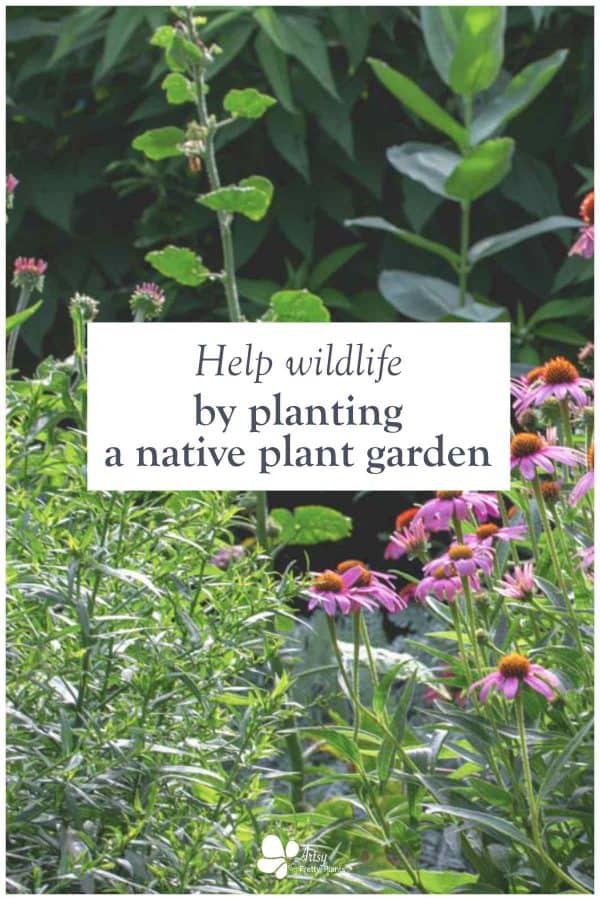



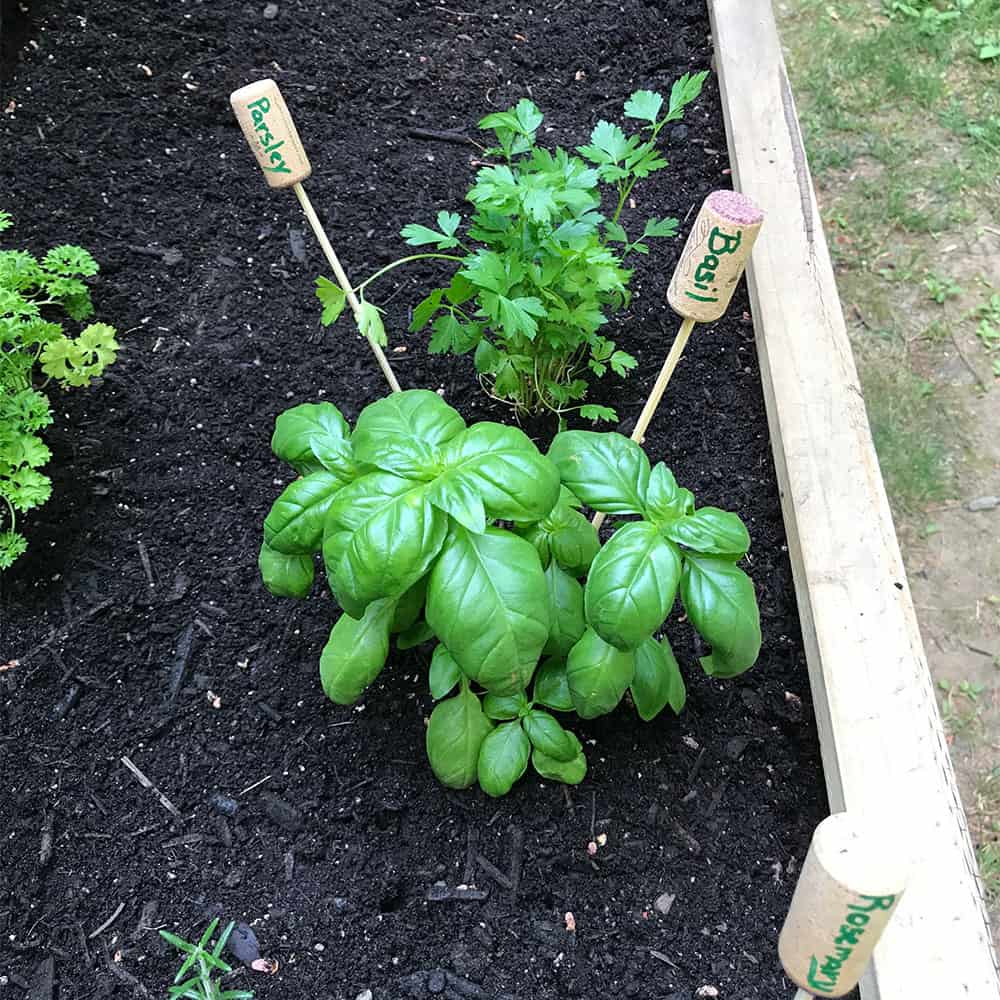
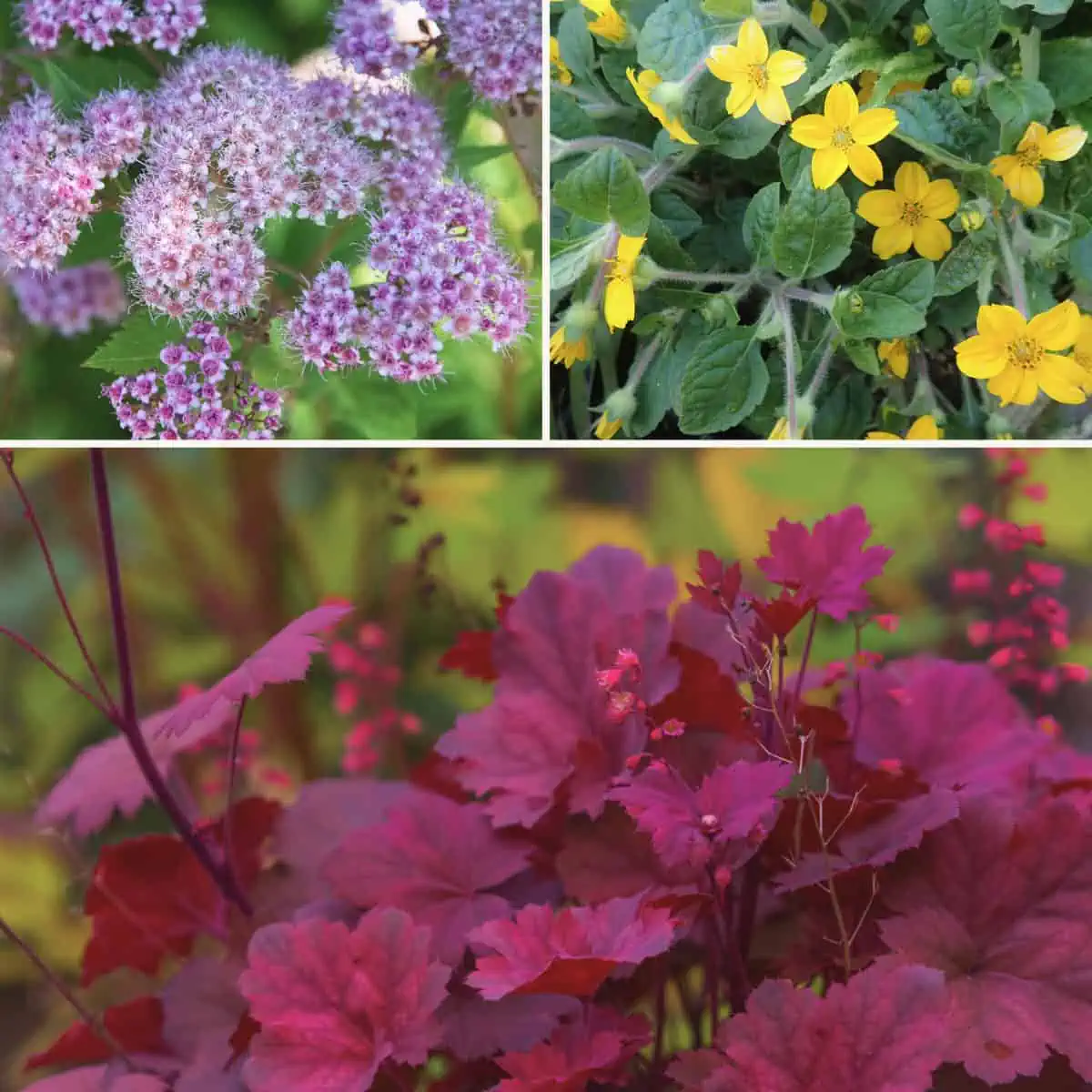

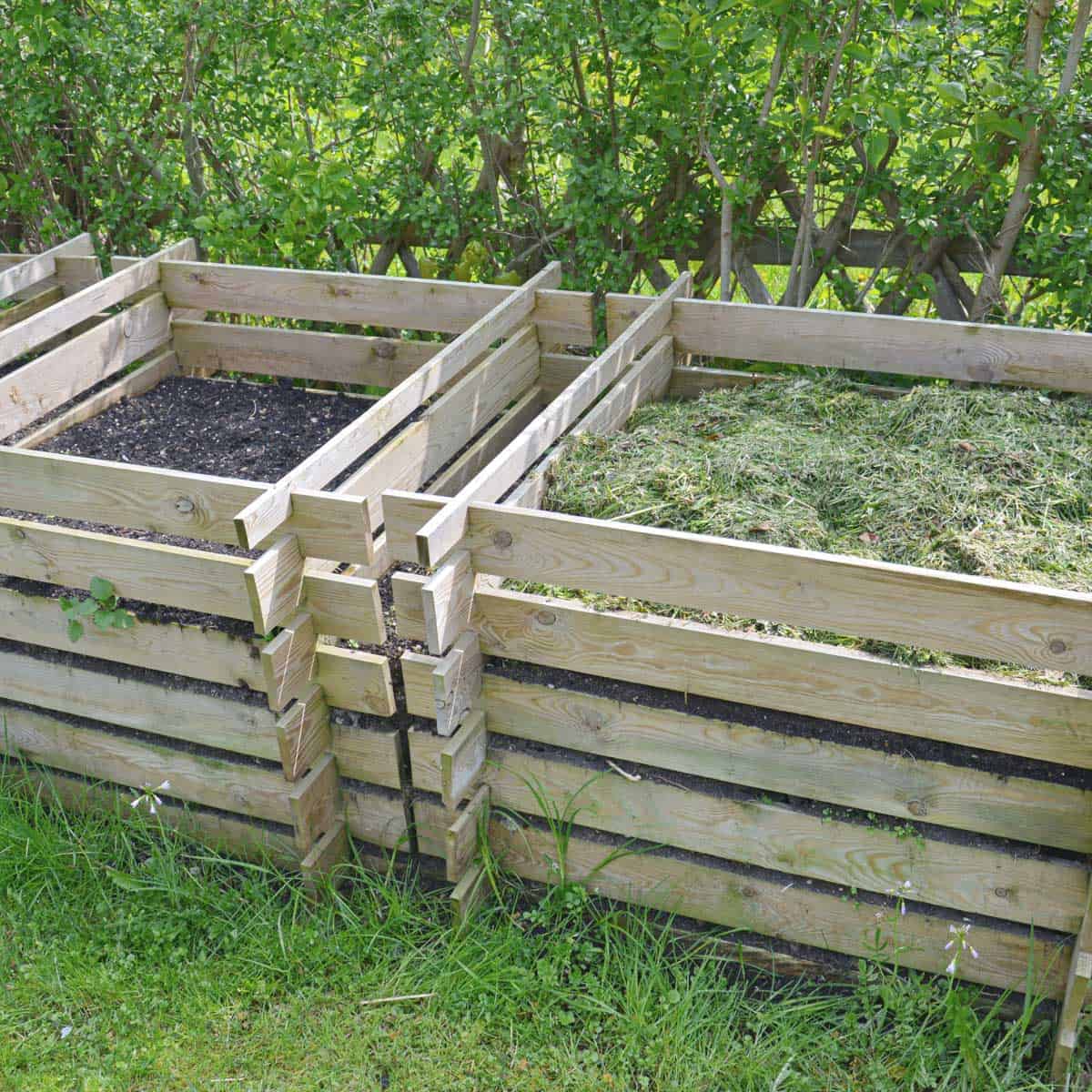
Great article to get us started with native gardens. In California, gardeners new to native gardening have some fabulous resources and databases available for free. Wonderful resources include: calscape.org; calflora.org; theodorepayne.org; and my very favorite is laspilitas,com. LasPilitas is a native plant nursery in two California locations with an extensive database of California’s ecosystems, soils, plant communities, etc. It has been my go to for information and most of the plants for my native California coastal sage scrub garden. Once started, you will never look back! Less work, less water usage (which is crucial here in Calif.) and much more enjoyment of your native flora and fauna!